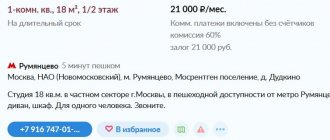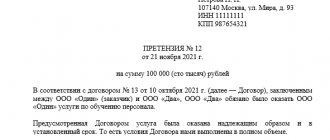A correctly written ad for free boards (Avito, OLX, Slando, etc.) is like a “triad” in medicine. It allows you to freely, but at the same time effectively attract buyers to sell almost any goods and services, ideally complements other advertising channels and does not require special skills in writing texts. This is for customers. And for copywriters, this is just another profitable niche with huge demand, a low barrier to entry and little competition. I know specialists who work only in it and feel great.
In a word, if you have ever wondered how to write advertising text for boards like Avito, OLX, Kufar, etc. or just want to find new orders and make money, make yourself comfortable. I'll tell you a lot of interesting things. Plus, at the end of the article you will find a video with additional examples and recommendations.
Features of writing ad texts for online boards
Despite the fact that there are dozens of different message boards, the principles in them are the same. Three free elements are available to you to solve the problem:
- headline
- Ad text (no formatting)
- Visuals (photos)
There is another hidden secret element, ASCII codes, which can either greatly enhance your ad or ruin it completely. I'll tell you about them below.
Despite the limited availability of tools, in practice they are more than sufficient to solve the problem. At the beginning of my career, I had the opportunity to sell fuel trucks worth 2 million rubles through Avito with one client. And the applications came. At the time it seemed like something incredible to me.
Using paid amplifiers when writing
Any board, no matter Avito or OLX, is a commercial system whose main task is to make money. Therefore, in addition to free tools, you have access to paid ones: rise in search results, special placement in promotional blocks, highlighting the title in a different color, etc. All of these boosters provide more views, but none of them will make your ad more effective or persuasive. This is entirely your task.
In this article I will show you how to write an ad correctly so that they trust you and are more willing to respond to your offer to sell. And it doesn’t matter what you are selling: fuel trucks, real estate, baby diapers, animator services or grandma’s old grand piano. The principles are the same everywhere. However, there are also variables that must be taken into account. We'll talk about them now.
Important Variables When Writing an Ad
The first and main variable that you need to constantly remember is the audience and segment (B2B, B2C) you are targeting. The audience on the boards is very diverse. And before writing the text, you need to clearly understand who your buyer is. Let's use an example. You sell biofiber greenhouses. In one case wholesale, in the other - retail. In the first case, your buyers are legal entities, in the second, they are summer residents.
Despite the fact that your product is essentially the same, the ads will be completely different. Simply because the interests of the audience are different. Summer residents are interested in the beneficial effect, and wholesalers are interested in the economic benefits from resale. That’s why, before you start writing the text, answer two simple questions: who buys from you, and what interests these people in the first place.
The second important variable is competition. Your ad will have to compete with dozens or even hundreds of similar offers. This variable depends on the segment, niche, audience and region (if relevant). Look at what your competitors offer and write down their main conditions, prices and strengths. This will make it much easier for you to adjust.
Website for selling real estate
Avoid templates!
There are campaigns that make websites using the same template, all these websites are similar to each other and people are already accustomed to them and react poorly to them. It is important!
The same goes for quizzes, analyze, if everyone in the niche uses them, then most likely the quiz will not work well, because people are already sick of them.
By the way, quizzes with a large number of questions work better (we tested from 8 to 28, the best completion rate was 28 questions, a hypothesis explaining the behavior: people filled out half of them, they see that they have gone through a lot and they are sorry to quit).
Lead generation and
Sometimes it works better than the website. Can be configured on FB and VK.
Conversion-increasing tricks:
Manual input.
We choose to strengthen intentions, the person filled out the form and the system asks him to double-check.
Thank you for the application and tell him when we will contact him, optimally no more than 15 minutes for processing (ideally 5 minutes).
Buyer motives
Message board visitors are not a random audience. These are people who are looking for specific products and services. They are looking for the best deal. They compare offers. And here it is important to understand that every detail matters. For example, look at the texts of two advertisements.
Example of ad text on Avito (sample No. 1)
An ad missing an important detail.
Example of ad text on Avito (sample No. 2)
An advertisement with an important detail.
They are identical with the only difference being that one reveals one more key detail. Now evaluate your perception. Subjectively. Which of the examples of written advertisements appeals to you more?
And one more important point. When a potential client visits your ad page and views it, a curious reaction occurs in his head. Essentially, his brain sends one of two signals: “I believe the author of the ad” or “I don’t believe.”
The term “reptile brain” is sometimes used in marketing. No, I'm not comparing people to reptiles. Reptiles simply have a heightened sense of danger. As soon as this feeling arises, the reptile runs away. For people, everything is more complicated, but the principle is the same. If a person feels there is a catch, he leaves so as not to take risks. Or chooses another seller whose ad does not trigger a red flag. Or is it written simpler and clearer.
This reaction is purely emotional, so if you ask the target audience to explain it, they will most likely say that they find it difficult to do so. They just feel that something is not right. And here we come to a simple rule.
“Don't try to deceive the buyer. People feel false. The opposite is also true: honesty is disarming and captivating.”
Email marketing for real estate
Mailings will help you gradually warm up a potential client and create a warm, trusting connection with him. Email marketing in real estate can be built on general principles - maintain regular contact with the client and send him personalized newsletters.
Start with a triggered welcome series that will start immediately after you sign up. For example, this one:
- Thanks for subscribing. Main offers, promotions and discounts.
- Letter with details of the plans. Make separate buttons for the main types of apartments: this way you segment the subscriber by the desired property format.
The group, in its welcome letter, talks about the main advantages of its complexes and an easy way to get a mortgage. At the end there is a commercial and all the necessary company contacts:
Welcome letter from the developer "PIK"
Then you can send these types of letters:
- with useful content - about repairs, mortgages, tax deductions;
- promotional mailings - about new promotions, invitations to view apartments;
- newsletters about construction progress;
- customer stories - people who have already moved into new apartments. Try to make such letters beautiful and useful - with good photographs, discount offers, and so on.
For example, here is a digest with useful materials for those who are buying a house. How to calculate an acceptable price for yourself, how much to sell your old house for, how to receive notifications about suitable offers:
Digest from Redfin for those buying a home
Engaging email from Trulia voting for different types of homes. On the site you can buy all the houses presented or select similar ones:
House Vote Letter from Trulia
If you implement email marketing using SendPulse, you can set up notifications for managers so that they immediately call hot leads. For example, a person switched from an email to a promotion on the website, which means he is interested, and a call would be helpful. Read how to set up notifications for managers in SendPulse on our blog.
Take care of those who have already bought an apartment. Send them announcements of events that take place on the territory of the residential complex and nearby. Invite residents to join communities on social networks.
We write the title of the ad
This is why I love copywriting, because many technologies work regardless of the media. So here, the proven 4U formula, about which I have already written a detailed guide, works ideally for writing headlines.
If you take a closer look at most of your competitors’ texts, you will see that they are primitive and boil down to the banal “I’m selling a dress” or “I’m selling a laptop (specs). But meanwhile, it is by title, picture and price that buyers select ads for more detailed viewing. In other words, here we see the same sales funnel through which potential buyers need to be guided. The goal of the “title + picture” tandem is to interest people enough to start reading the ad. No more, no less.
The effectiveness of work at this stage can be monitored by the number of views. Unfortunately, on most message boards, this is one of the few feedback metrics (other than calls and messages) that can be used.
In total, using the 4U formula (in the Russian version PUPS), your title should ideally contain four key elements.
- Aiming. The headline should immediately specifically say what you offer in a language that people can understand.
- Uniqueness (it must differ from competitors in at least one detail).
- Utility. The headline should provide some benefit (if it is relevant to your offer).
- Urgency. You can use a time frame or deadline to generate even more interest.
Let's take examples of advertisements for selling dresses (samples No. 1 and 2). If we combine all four elements of the 4U formula, we get the following heading.
Reiss dress (2016, never worn), RUB 12,000. with delivery in Moscow on the day of purchase.
In this case, we have all four elements:
- Aiming. We have the name of the brand and the year of the collection. Plus, the title complements the visual image. So the buyer immediately sees that he found exactly what he was looking for.
- Uniqueness. There are no other headlines that are so detailed, plus we have the detail that the dress was not worn, which in our case is also one of the main advantages.
- Utility. Two elements are responsible for this element of the formula at once. The fact that the dress has not been worn and the fact that it can be delivered in Moscow on the day of purchase.
- Urgency. There are two factors here: primary and secondary. The main one is delivery times. Secondary - date of manufacture of the dress. With urgency, we make the headline as strong as possible.
As you can see, there is nothing complicated about this. We simply use common sense when writing the headline. We talk about what interests a person and hook him with text and an accompanying image.
Please note: Some boards may have a character limit on the title. In such cases, include only the essentials and remove the unnecessary.
For example, you can often omit words like “for sale.” It is logical that if you show a product and name the price, then you are selling it. I'll give a few more examples below.
Internet advertising for real estate
The starting part of a real estate marketing strategy is advertising on the Internet. The first contact with a potential client is easiest to make on sites that are familiar to him. This can be done using banner advertising, which is configured in Google and Yandex systems.
We will catch more interested clients who are already looking for an apartment using contextual advertising. And we will warm up those who saw our advertisement or visited the site using remarketing.
Banner advertising
It is also called media. This is the top part of the sales funnel: you introduce potential customers to the company and create interest in the product. In other words, you are trying to reach your target audience as widely as possible.
Example of banner advertising for real estate
Banner advertising is configured in Yandex.Direct or Google Ads based on audience characteristics: gender, age, Internet behavior, interests, and so on. This audience will see your advertising on partner and own sites of the network you choose. The networks are extensive: Yandex has more than 40 thousand sites, Google has more than 2 million.
Moreover, these are not necessarily banners, they can be video and even audio. For example, Yandex shows commercials before trailers on Kinopoisk, and includes audio advertisements between tracks on Yandex.Radio and Yandex.Music:
List of possible sites when placing an advertising campaign in Yandex
How to use it. For example, you are selling apartments in the business part of Moscow - in the Moscow City high-rises. I think in this case your target audience has approximately the following characteristics:
- target location: Moscow;
- age - 30-45 years;
- high level of income: use expensive phones and computers;
- spend a lot of time on the Internet;
- don't watch TV;
- have no children;
- shop online;
- have a car or take a taxi.
And the situation is completely different if you need to sell inexpensive apartments in a residential area. Then your target audience will be students or young families with one or two children and low earnings. This is what the audience settings look like in Yandex.Direct:
Audience settings for a campaign in the Yandex advertising network
Note! To make media advertising work better, draw up portraits of your target audience in advance and determine their pain points and preferences. This way you will increase the number of conversion requests.
contextual advertising
These are paid lines in search results - at the top and bottom. They are marked with a special “Advertising” icon and are shown relevant to the user’s queries, that is, the context works for people already interested in purchasing.
What key queries can you set up contextual advertising for:
- Geographical - “apartments on the Riga highway”, “buy an apartment in the Novosibirsk center”.
- Narrow ones - “buy a two-room apartment from a developer in Lyubertsy”, “studio apartment up to 5 million. Krasnogvardeyskaya metro station”.
- Named (branded) - “Novostroy complex”, “Podosinki residential complex”.
Contextual advertising keywords often use branded queries with the names of competitors. Then a person searches for one company, but receives advertising from another. This is a dangerous move. There have already been judicial precedents in Russia when fines of up to 500 thousand rubles were imposed for advertising using other people's trademarks.
People who already have a more or less formed request come to search. To ensure that your ad appears on such a request without fierce competition, formulate your features and add them to the semantics. A metro will soon be built nearby - add this to your keywords. Indicate the georeferencing, delivery date, details about the apartments.
Automation of email newsletters
Send chains of trigger messages: welcome, abandoned cart, reactivation, combining email, SMS and web push within one chain.
Set up trigger mailings
Google remarketing or Yandex retargeting
The names are different, but the technology is the same. With its help, you can warm up with advertising banners a user who has been in contact with your site: he came in, started filling out an application, or bought something.
To set up Google Ads remarketing or retargeting using Yandex.Direct, you need to generate a special code in the system and embed it on all pages of your website where you want to track users. The system will begin to collect visitors into different audiences, to which you can then launch advertising.
The tracking code can be added not only to the site, but also to advertisements. Then you can show other advertising options to those who have already seen your banners and are familiar with the brand.
How to use it:
- Option 1: the user visited the site and looked at the section with two-room apartments. You took his data to the “Dvushka” audience and now you can show different ads. For example, introduce them to the layouts: here is a two-room apartment for a family with a children’s corner, and here is a two-room apartment with a combined living room and kitchen.
- Option 2: the user saw your ad on a general topic: “Residential complex “Podosinki” - apartments on Varshavka from 5 million rubles.” You introduced him to the brand, and now you can show your advantages through advertisements: “A yard without cars, your own kindergarten - in the Podosinki residential complex.” At the same time, you can fine-tune your retargeting audience: for example, show an ad about a kindergarten only to people of the appropriate age with children.
Writing the ad body text
There are several approaches to writing ad text. Which one to choose depends on the situation. I always recommend starting with the first one (universal), and connecting the others as needed for testing or in situations where the universal option does not work (about 5-10% of cases).
Approach No. 1 (neutral, universal)
The essence of this approach is to use the inverted pyramid principle. You concisely and consistently give the reader the information he needs to make a decision, from the most important to the unimportant. There are only two simple and, paradoxically, mutually exclusive rules.
Rule No. 1: remove everything that is not related to the sale. This includes water, abstractions and other semantic garbage that does not tell the buyer anything (more details here).
Rule #2: the more you write, the faster you sell. Again, with the caveat that you only say the necessary things, details that are directly related to the sale.
This approach, as a rule, does not use the AIDA model, because the sequence of information perception is slightly different. The fact is that when a person reads the text of an ad, his attention has already been attracted by the headline, and the buyer is initially interested in the product. Now he’s just looking to see who can buy this product from. Factual information is responsible for the decision-making stage, and the appeal closes everything. In other words, AIDA is present during the sale, but at a higher level.
A clear example (sample) of an advertisement for the sale of a car from life
I sold my first car through an ad using this exact approach. And sold it in 10 minutes. At the average market price. Those. 10 minutes later the buyer called, half an hour later we met with him, looked at the car and agreed on a deal. Next is a matter of technique (deregistration and re-registration). This is despite the fact that there were about 20 similar cars at the same or even lower price on the same board. And this is the ad text I wrote. I just listed the facts.
- Along with the car I’m giving away: A set of almost new winter tires (Hankook)
- New radio (Pioneer)
- Original jack
- New battery (Varta, 75 Ah).
- Seat covers.
I will answer any questions by phone. Call from 10 to 22.00.
Was there anything supernatural or genius written in this text? No. Was there some kind of manipulation involved? Also no. I simply honestly listed everything that interests the buyer in the first place, and what distinguished my car from others. All.
The only manipulation I used was to reveal such details in order to create the impression of a pedantic and meticulous car owner who immediately repairs any faults. Moreover, the willingness to check the car at any service station and disclosure of shortcomings instills even greater confidence in the purity of the seller and the security of the transaction. Plus, the answer to the main question was written: the reason for the sale.
Yes, the approach is primitive and simple. But it is effective because it inspires trust.
Approach No. 2: ODP formula
In one of my earlier articles I already wrote about the ODP formula. It works well for legal entities that massively sell some goods through advertisements on boards. Its essence is that you write the ad text according to the template:
- Offer (something very tempting)
- Deadline (limitation)
- Call to action
Let's look at an example of text for, say, selling a marker. A regular whiteboard marker. For simplicity and clarity, I will leave only the elements of the formula in the ad. Check out the sample.
When purchasing 2 markers:
- third marker - as a gift
- discount card for the entire range of store products
- erasing sponge for whiteboards as a gift (offer)
Only 2000 markers are included in the promotion (not counting gift ones). (deadline)
Call and order! (call)
It is advisable to add a description of the product to this formula (before or after the offer).
Approach #3: WHY formula
This approach works well if you need to write an advertisement for the sale of services. The specificity of such advertisements is that first you need to sell the master, and only then - his service. The WHY formula (I wrote about it in detail here) copes amazingly with the first task.
Let's look at a clear example. Let's say you need to sell the service of covering a bathtub with enamel. You use the WHY formula at the very beginning of the ad copy to build trust and establish an emotional connection with the reader, then sell the service itself.
I believe that a refurbished bathtub should be durable and safe. Moreover, I am firmly convinced that a master who restores a bathtub must be responsible for his work and do it efficiently, as if for himself. No excuses.
Therefore, I always do the work myself and use only proven Reaflex-50 enamel (Tikkurila). I apply at least 6 coats (although 3-4 are required) to ensure the strength and durability of the enamel for 10-15 years.
I have no managers, no website, no sales department, which means there are no expenses for their maintenance. Therefore, prices are lower than those of large companies. Of course, I conclude an agreement with you that states the guarantee and issue a cash receipt.
Call and I will tell you something about bathtub restoration that other masters won’t tell you.
In this example, we seem to intertwine benefits with the WHY formula and endear ourselves to the master. This is a very important point because many clients are afraid of making a mistake and want to be sure that they are making the right choice. I wrote more about perception in the article about mind and feelings. Take the sample for service. It hasn't been beaten up yet and works well.
Selecting visual images
One of the main elements. Yes, yes, don't be surprised. Even though I'm a copywriter, I firmly believe that images sometimes play an even bigger role in ads than text.
The fact is that most people are visual people. This means that the main information is perceived visually. The more images (quality images are important) you show, the higher the chances of selling the product faster.
This does not mean that you need to rush out and buy a professional camera and set up professional lighting (softboxes, flashes and all that). Of course not. But make sure that your photos have normal clarity and are taken in good natural or artificial lighting. Moreover, make sure that the photos reveal the interesting aspects of the product.
For example, if you wrote an advertisement for the sale of a car, then take photos from all sides, inside the cabin, the condition under the hood, the condition under the bottom. This way you show that you have nothing to hide, and this inspires trust. Or another example. You need to write an advertisement for the sale of an apartment. In this case, take as many diverse photographs as possible of the rooms, kitchen, bathroom, view from the windows, quality of repairs, communications, entrance (if these photos do not compromise the apartment, of course). The more you show, the more applications you receive in the end.
Tricks for writing advertisements for Avito, OLX, etc. boards.
As in any field, ad copy for billboards has its own tricks that many people don’t know about. These tricks can either make your ad stand out from others and provide more (or increase the speed) sales, or ruin the ad in the end. The second option happens more often in practice, because people often go beyond common sense and proportion. This is especially true for the first trick.
Trick #1: Pseudo-graphics (ASCII) in ads
On most boards, neither HTML codes nor formatting tools are available to you. Just bare text, that's all. But often these restrictions do not apply to copying and pasting. In other words, nothing prevents you from opening a table with ASCII characters (so-called pseudographics) and supplementing your arsenal with tools for placing accents. You can even draw. For example, here is a butterfly drawn with symbols directly in the ad text.
Butterfly drawn with symbols (ASCII art).
But, I repeat, many people, gaining access to pseudographic symbols, go too far, turning the ad into an outrage. Also, pseudo-graphics can be destroyed by adaptive layout. On the other hand, if you use ASCII characters sparingly to separate blocks of text and place emphasis, they will work to your advantage.
Look at the example (on some phones it may only display correctly in a horizontal position).
▀▀▀▀▀▀▀▀▀▀▀▀▀▀▀▀▀▀▀▀▀▀▀▀▀▀▀▀▀▀▀▀▀▀▀▀ ▓▒▓▒ ▓▒ EXAMPLE OF TEXT HIGHLIGHTING ▓▒▓▒▓ ▒ ▒▓▒▓▒▓ ANNOUNCEMENTS (with ASCII) ▒▓▒▓▒▓
Similarly, you can use bulletins to list benefits (this is especially convenient when you can’t just insert an unnumbered list into the ad text):
▓ Free delivery ▒ Mixer as a gift ▓ Loyalty card with a 5% discount ▒ A cup of coffee ▓ Scooter ride
But remember that it is better to be careful with creativity, as well as with humor. Not everyone can understand and appreciate this. After all, your job is to sell, not entertain.
Trick #2: “Endless” ad
There's a nasty thing about some boards. Texts from your competitors are displayed under your ad. This may be good for the user (depending on how you look at it), but for you it’s bad, especially if your competitor has a more attractive title. The buyer can easily glance at it and leave your advertising message.
To avoid this you can use a very simple technique. After the call, insert empty characters (for example, from pseudographics). One on each new line. This will expand the length of the text block, and competitors’ ads will go far down, off the screen. Blank lines can also be used, but some boards cut them off.
Note: This technique does not work for boards that have a block of images below the text.
Trick #3: Extended Photos
Photographs are generally used only for their intended purpose. However, it is also a bottomless source of competitive advantage. For example, if you have certificates or diplomas, they can be shown in photographs. If you provide services, show yourself and the process itself in photographs. This inspires trust. If you have a large pavilion, show the assortment in the photo. This will also work to your advantage. In short, photographs are a section not only for the product, but for any graphic information that you can use for sales.
Important: Please note that some message boards may have rules prohibiting the posting of certain visual elements. Therefore, always read the rules for using the service to avoid misunderstandings.
How can a copywriter make money from ads for Avito?
Writing advertisements for boards like Avito is a real Klondike for a beginning copywriter. Every day, millions of people and hundreds of thousands of organizations sell something. Therefore, if you help them with this, then it makes sense for them to pay you. In essence, the scheme here is very simple: people pay you money for bringing them money. And as long as you bring more than you are paid, your services are in demand.
Another question is how to find clients and convince them to cooperate with you. There is also nothing complicated here in principle. There are two ways: active and passive. I wrote about them in detail in this article.
In short, your sales system looks like this.
- Active system: You first look for potential clients - legal entities or individuals who sell something en masse. You analyze their sales ads (views, quality and informativeness of the text), call them and offer to improve the situation using your knowledge and skills. At this point they usually refuse, so you handle the objection and offer a bet (challenge). You make one ad for free, and if it works better than the current option, then the client pays for it and works with you on a permanent basis. If not, then the client loses nothing. In such a situation, even if the client disappears, you simply replenish your portfolio and turn to another client. Sometimes clients agree immediately if you are able to convince them during the conversation. Alternatively, you can strengthen the system with a commercial offer.
- Passive system: You use knowledge and skills and sell your own services through advertisements. In essence, your advertising texts become a clear demonstration of your competencies, and if everything is done correctly, then you receive orders. The system can be strengthened by creating a personal website, describing the service in detail, posting a portfolio and from time to time publishing articles on a blog about how to correctly write ad text for posting on boards like Avito. With clear examples from practice, of course.
As you can see, both systems are quite simple, the only thing is that they both require time to implement. But they also pay off with interest. For example, if you write 10 advertisements per day for 300 rubles each, and work 20 days a month, then your income is about 3,000 rubles per day or 60,000 rubles per month, which is quite good. Especially for a beginner copywriter. Moreover, over time, you will have samples of the most effective ads, which means their total number per day increases by 1.5-2 times. Along with it comes income.
But that's not all. As your customer base grows and business processes are debugged, you increase your cost. For example, I now set a price of about 10,000 rubles for a set of 4 advertisements. And they buy. Although this is not even my main area of work.
Another thing that plays into your hands is the fact that there are a huge variety of boards, both global (such as Avito, OLX) and local, for example, local for each city. Plus, there are niche ones. And each of them has your potential clients. Your task is to negotiate cooperation with them. That's all.
Features of real estate marketing
Real estate is the largest and rarest acquisition in life. The transaction cycle when buying an apartment or house can take up to a year. During this time, the buyer studies everything inside and out: options, location, chosen house, reputation of the developer, payment methods.
It’s difficult for sellers in real estate: real incomes of the population are practically not growing, and more and more square meters are appearing on the market, especially in economy class. K - competition.
At the same time, standard advertising technologies such as street banners and advertising in search results are no longer enough. The path to a transaction becomes more complex: the buyer comes to the site via a banner, then sees an advertisement on a social network, communicates with you in a chat bot, visits the site again, subscribes to a group on social networks... Before meeting with the manager, there may be dozens of such touches, which let's talk about a deal.
The strategy for successful real estate marketing is to create an information “cocoon” around each potential client. Constantly be where people are - on their favorite sites, on social networks and other convenient touch points. Create a strong and positive information field for the company.








